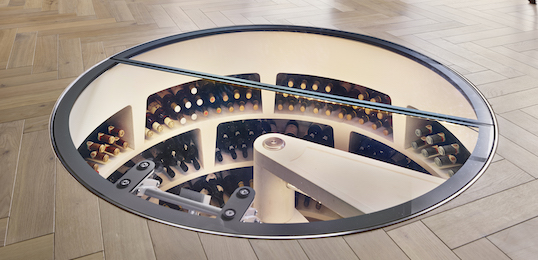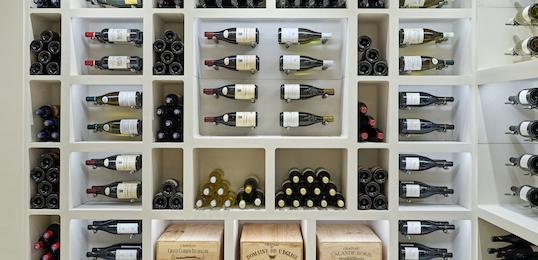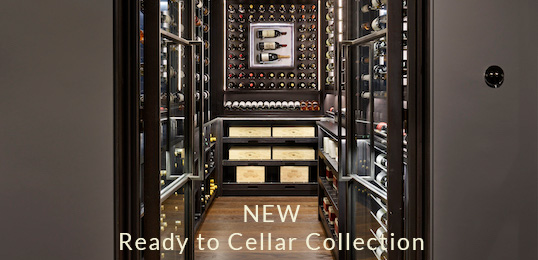The biggest contrast was felt to be one of emphasis. If New World wines were made in the cellar – one Californian winemaker famously declared that “soil is dirt” – Old World ones were made in the vineyard. Without good grapes, you couldn’t make good wine. Terroir, that famous sense of place that is so revered in France, was spoken about, sotto voce, in Italy, Spain, Portugal and Germany too.
The second biggest difference, according to people who claimed to know about these things, was bottle age. If New World wines were all about immediate pleasure, those from more classic regions often took time to unfurl their aromas and flavours. The foreplay, if you like, was longer. It was not unheard of for people to cellar certain wines – one thinks of traditional Barolo and claret – for 30 years, happy to defer their pleasure while they softened in bottle.
That was the theory, at any rate. Like all generalisations, it contained a substantial dose of truth. But it wasn’t entirely correct. It is slightly silly, then as now, to divide the world of wine into two power blocks. The New World made subtle wines, just as the Old made blockbusters. The ageability distinction was overstated too. Penfolds’ Grange, to take only one example, had already proved that southern hemisphere wines, even those from warm climates, were perfectly capable of bottle development.
And yet we live in a very different world today to the one that existed in 1985, when the concept of fine wine from the New World was a fledgling concept. Wines that we unequivocally accept as such today – top New Zealand Pinots, Australian Chardonnays, Napa Valley Cabernets, Chilean Bordeaux blends or Argentinian Malbecs – were only just beginning to develop a global reputation. And the styles that were produced then bear little resemblance to those of today.
Stylistically, the New and Old Worlds have moved closer together. It used to be comparatively easy to tell, say, an Aussie Shiraz from a Rhône Syrah, or a New Zealand Chardonnay from a Puligny- Montrachet, in a blind tasting. But elegance is no longer the exclusive preserve of the Old World, just as approachability and fruit forwardness can be found in previously austere European classics. Bordeaux is a case in point. A vintage like 2009 is drinkable almost immediately, although it will develop in bottle, too.
Something similar has happened out in the vineyard. Not even the most boneheaded grower would argue that “soil is dirt” any more. Now the emphasis in both hemispheres is on terroir, or “distinguished sites”, as the Aussie winemaker Brian Croser calls them. Good wine everywhere is made in the vineyard these days. The winemaker’s job is to avoid “stuffing up the grapes”.
The New World has also benefited from the development of new regions, such as the Uco Valley in Argentina, Central Otago in New Zealand, the Mornington Peninsula in Australia, San Antonio in Chile, Hermanus in South Africa and the Sonoma Coast in the USA as well as a greater understanding of its traditional areas. Wines from places like Luján de Cuyo, Hawke’s Bay, the Barossa Valley, the Maipo Valley, Stellenbosch and the Napa Valley are better balanced and more likely to age today than they once were. All in all, that’s quite a collection. There will always be a place in my cellar for the leading European wines, but the best of the New World deserves to be there too. The old divide between immediacy and ageability just doesn’t apply anymore. In 2012, we can have our cake and eat it. Or rather our wine and drink it.
Which wines are worth cellaring?
As ever, we need to make a distinction between bottles that you are buying for investment purposes and those that are purchased for pleasure. The first category is a small one in the New World. There are a handful of wines in Australia and California that are “collectible” (a euphemism for saleable), but the opportunities for speculation are nothing like as extensive as they are in Italy, Spain and especially France. So let’s concentrate on drinking wines instead.
Australia first. The wines I would, and indeed do, happily cellar from Down Under include Rieslings from the Eden and Clare Valleys, Bordeaux blends from Coonawarra and Margaret River, cool climate Shirazes from Victoria, and Chardonnays and Pinot Noirs from the Yarra Valley, the Adelaide Hills, the Mornington Peninsula and Tasmania.
Chile doesn’t have quite as many cellar-worthy wines, but my tips would be Syrah from San Antonio and Elquí, Cabernets and Bordeaux blends from the Maipo Valley, Casablanca Chardonnays and (little known, but potentially best of all) old vine Carignans from the Maule region.
Across the Andes in Argentina, it’s also the reds that are worth cellaring, although we are talking medium term wines in the main. Look out for the Malbecs and Malbec blends from the Uco Valley in particular, as well as those from northerly Salta, as both are showing increasing signs of finesse and balance.
In New Zealand, I’d choose Chardonnays from Nelson, Hawke’s Bay and Auckland, Pinot Noirs from Central Otago and Martinborough and Rielsings from just about anywhere. But your best bets for bottle development are arguably the Syrahs from Hawke’s Bay and Waiheke Island and the Merlot-based blends, again from Hawke’s Bay. From South Africa, the wines that I like to cellar are the white blends and, best of all, the Chenin Blancs, although my collection also contains some Bordeaux style blends from Stellenbosch, some Chardonnays from Hermanus and one or two Syrahs from the Swartland.
The United States makes a surprising number of age-worthy wines. Top of my list would be Pinot Noirs from Oregon, the Russian River and Santa Barbara, Chardonnays from the Sonoma Coast, a handful of Washington and Napa Valley Cabernets and Zinfandels from all over the state.
www.timatkin.com


